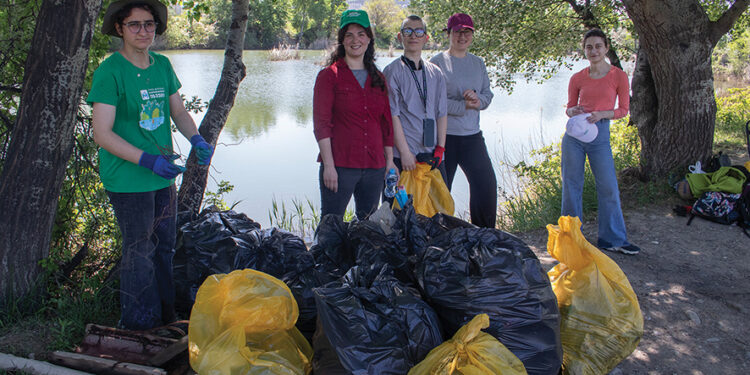One bite at a time. That’s how you eat anything bigger than you are. In the case of garbage removal, one big BAG at a time.
Saturday, April 26, as I write this, has been one of quite a few garbage collection days spread out over some years at Dighomi Meadows, near Green Diamond, where my wife and I live. Organized by Anna, who founded DM, today saw about 12 of us work for nearly four hours from 10am. She brought large bags, gloves, hats, water, snacks, a rake and hooked pole. We added our enthusiastic numbers: mostly Georgians from school age to adult, a Kazakh family, and me.
“Safety is Job One!” Anna reminded us, and also told us not to pick up anything we felt uncomfortable with. We started at the DM sign near one of the area’s large ponds, concentrating on the surrounding area first. Bags quickly began to fill.
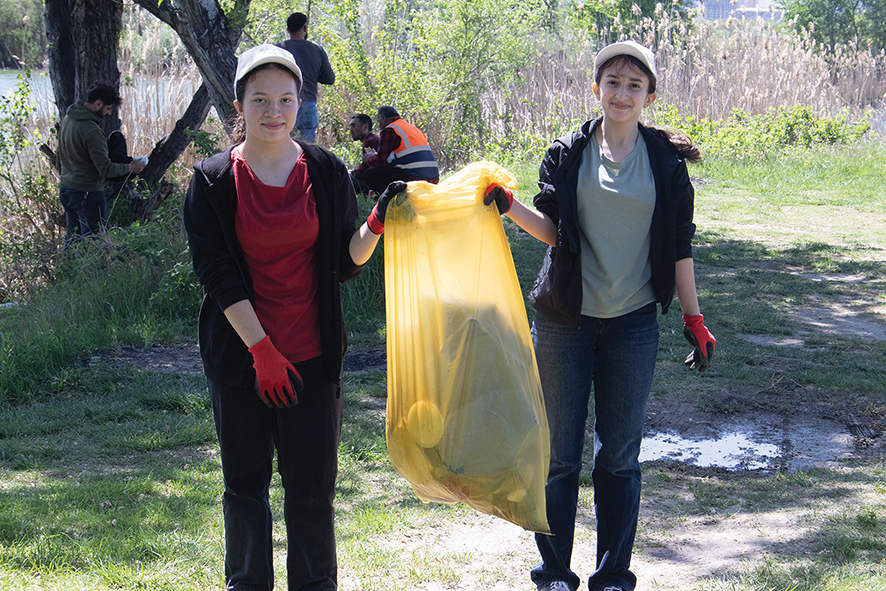
Glass, metal, paper, disintegrating styrofoam, and especially the omnipresent plastic, in so many forms. It does slowly break down in sunlight, some types of it, but still it remains in the environment for years, flaking away. Chemicals from it can leach into the ground. Animals can eat it and choke, or die from an inability to pass it.
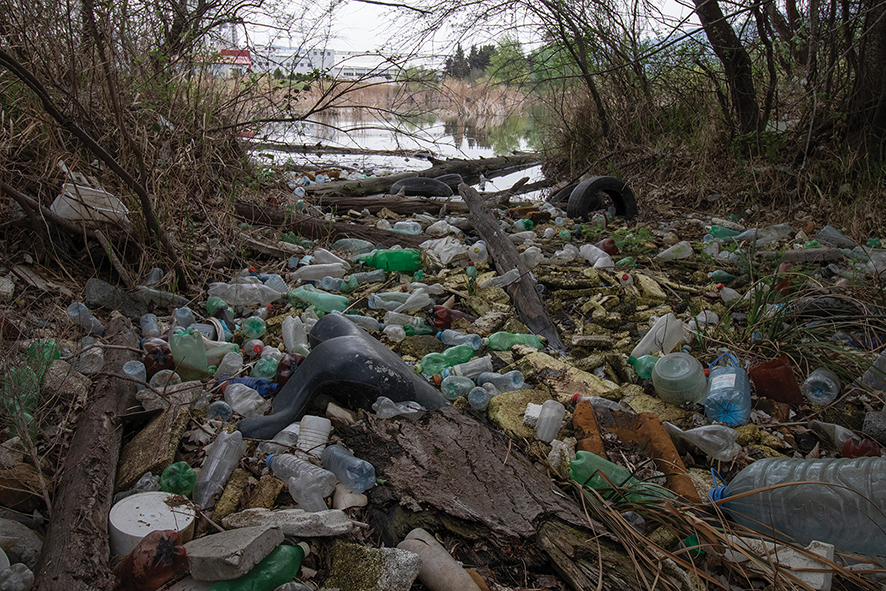
Our efforts had immediate, heartening effect, as whole areas began to appear with no trash visible at all, especially at the pond’s edge and nearby. Looking much better. In warmer weather, I would not hesitate to go into the water in trunks: a shower at home is minutes away, after all! The water isn’t the cleanest, but it’s not filthy either, and I’m good with that. A bit cold yet, though. Soon, maybe.

We moved on towards the other ponds behind the main soccer fields, these mostly manmade in the process of illegal digging and dumping of large-scale waste years ago. Here, up to 7 or 8 terrapins at a glance were visible, sunning their cold reptilian blood on logs in the water. Frogs were croaking everywhere. The odd woodpecker hammered.
A car driven by people who work for tene.ge (recycling) appeared, and one of them did a video interview of Anna, which seems like it will be most useful for publicity.
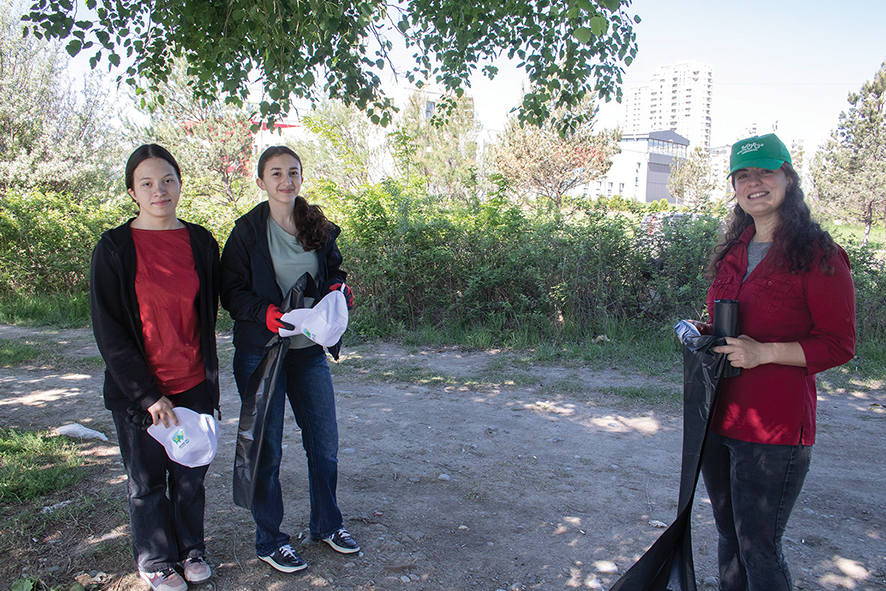
We raked or hooked whatever we could reach from the water’s edges; in some places bank steepness or slipperiness hindered, but we did what we could.
We identified a field of pretty blue flowers as flax, a plant which apparently composes the oldest surviving example of textile work in the world, up to 35,000 years old, found in a cave near Kutaisi. Anna also showed us wild asparagus, about which my wife was delighted to hear, she who is so find of foraging field and forest. In turn, I was able to tell Anna that we had already found tqemali (sour plums), still small enough to be seedless, and had used them to make our year’s first chakapuli stew! Plus the beautiful deep purple irises we had found growing in several places, likely seeded from cut flowers thrown away. Here, at least, treasure from trash.
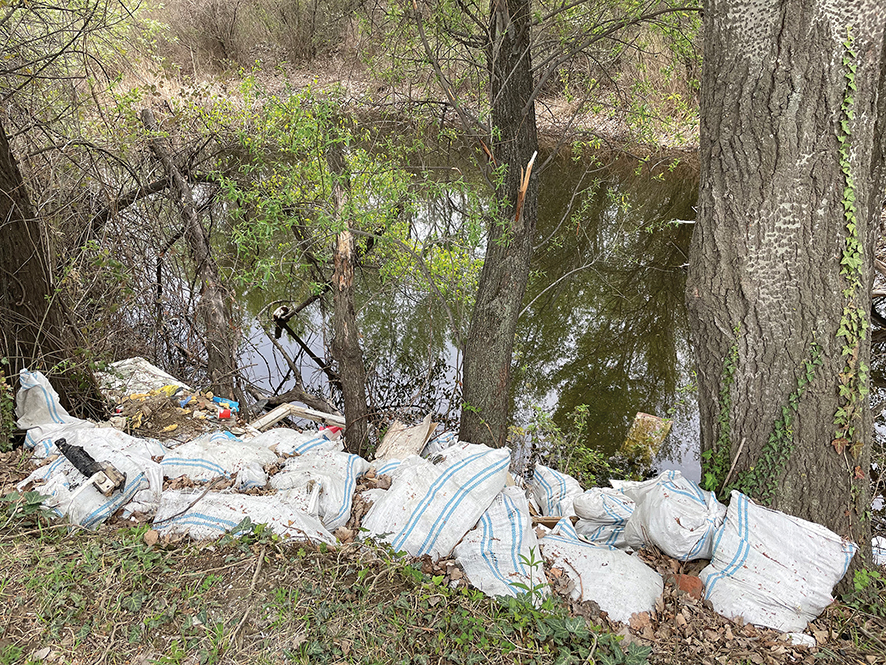
We ended up filling about 20 large bags with our findings, said our farewells and congratulations, and went our separate ways. I was delighted to participate in cleaning up my own neighborhood, and hope to do this again, especially with even more volunteers. But really, anyone can do this every time they walk here; and this should become our habit, always taking an empty bag and returning with it full. So easy!
Blog by Tony Hanmer
Tony Hanmer has lived in Georgia since 1999, in Svaneti since 2007, and been a weekly writer and photographer for GT since early 2011. He runs the “Svaneti Renaissance” Facebook group, now with over 2000 members, at www.facebook.com/groups/SvanetiRenaissance/
He and his wife also run their own guest house in Etseri: www.facebook.com/hanmer.house.svaneti

